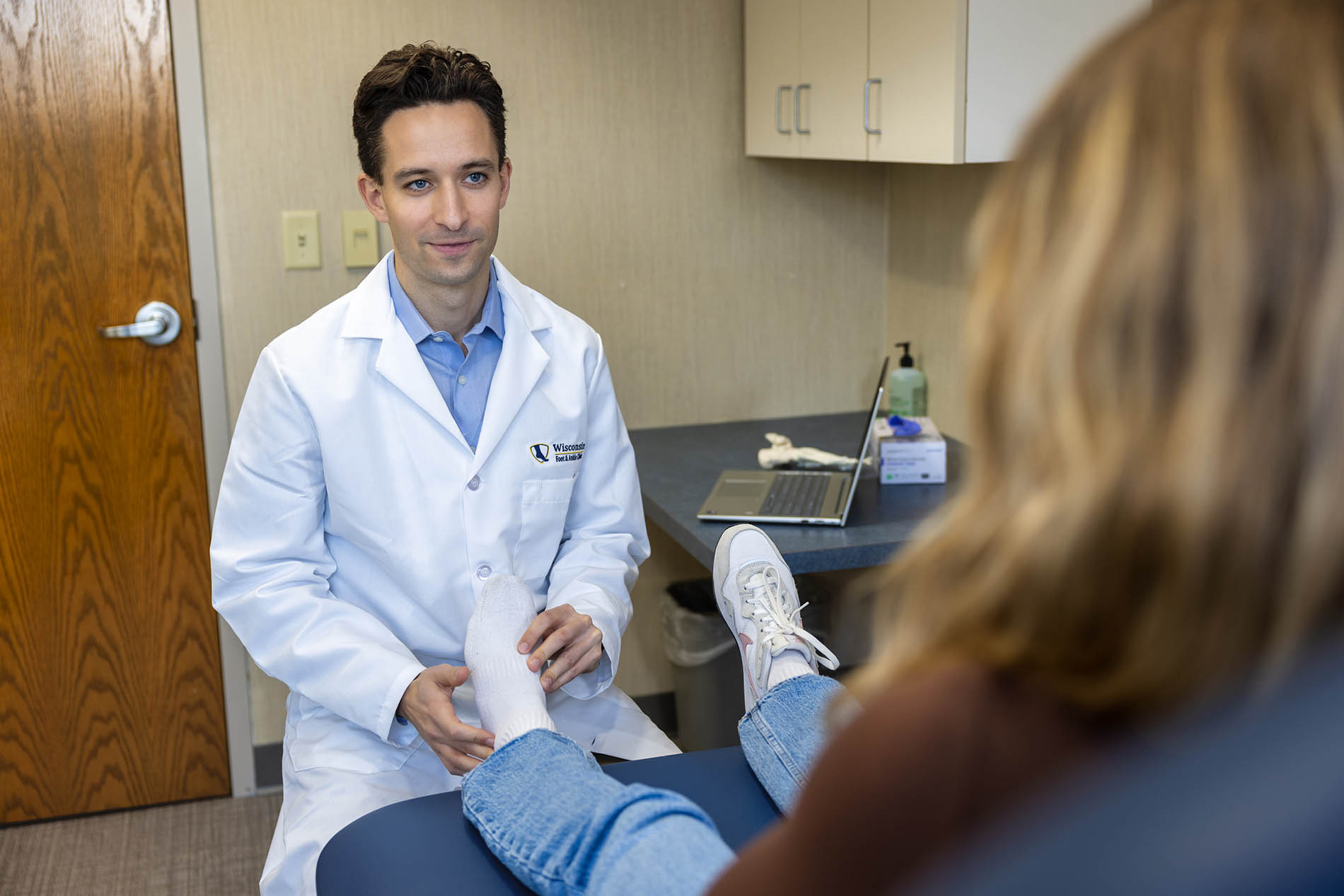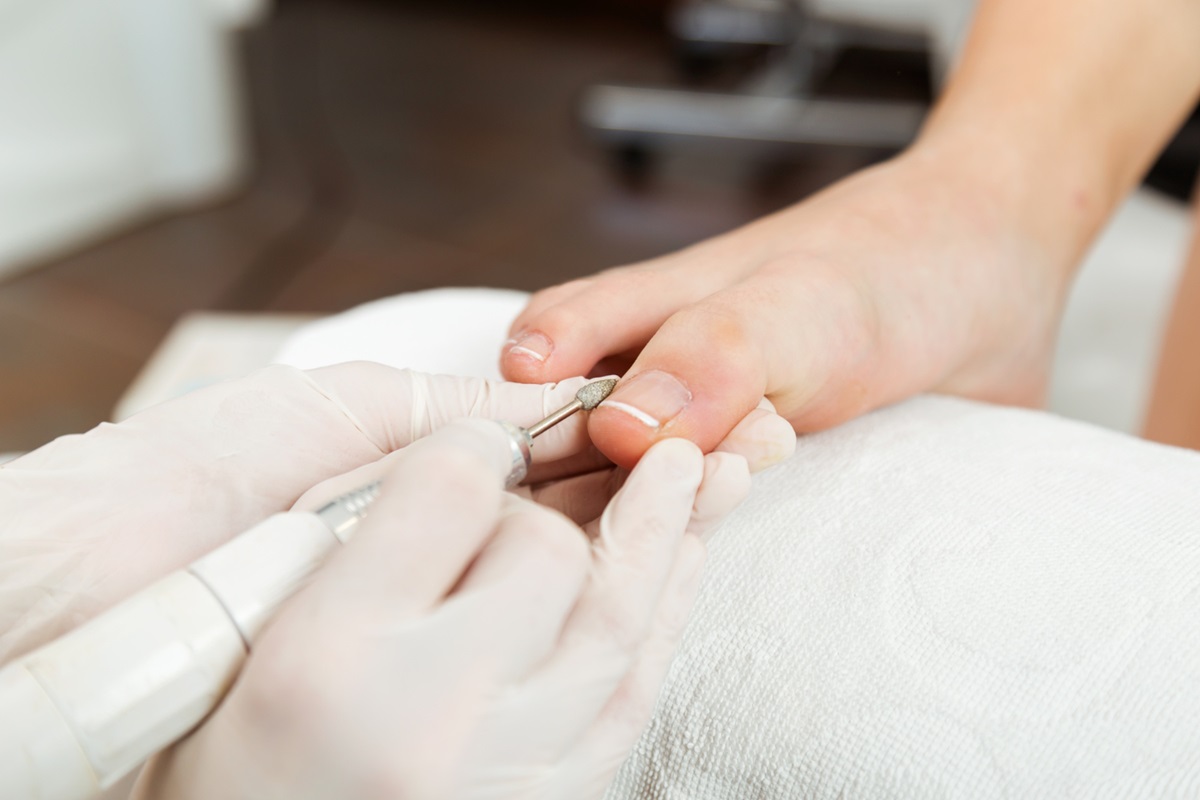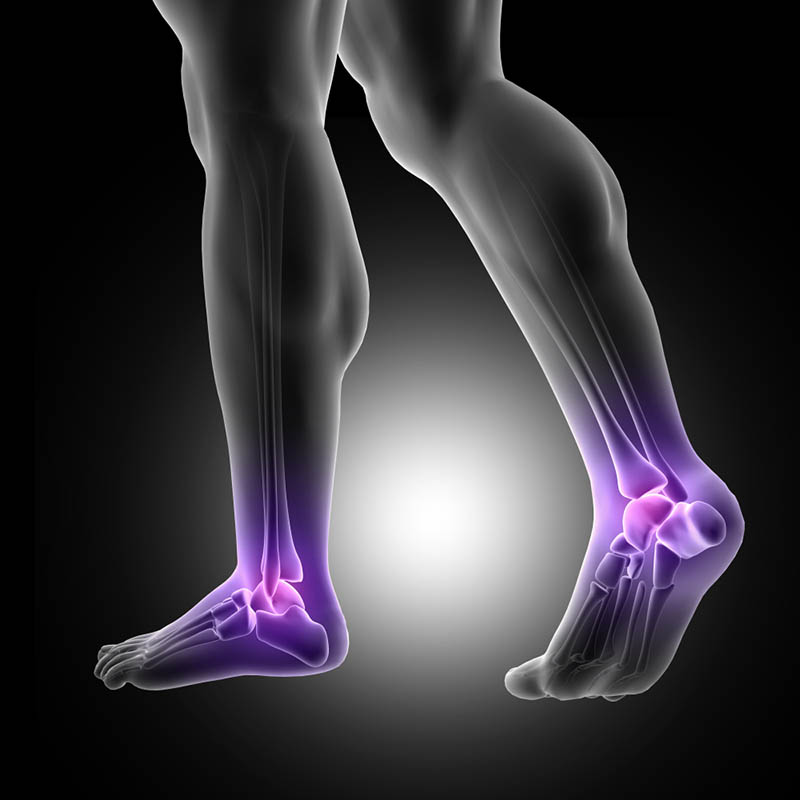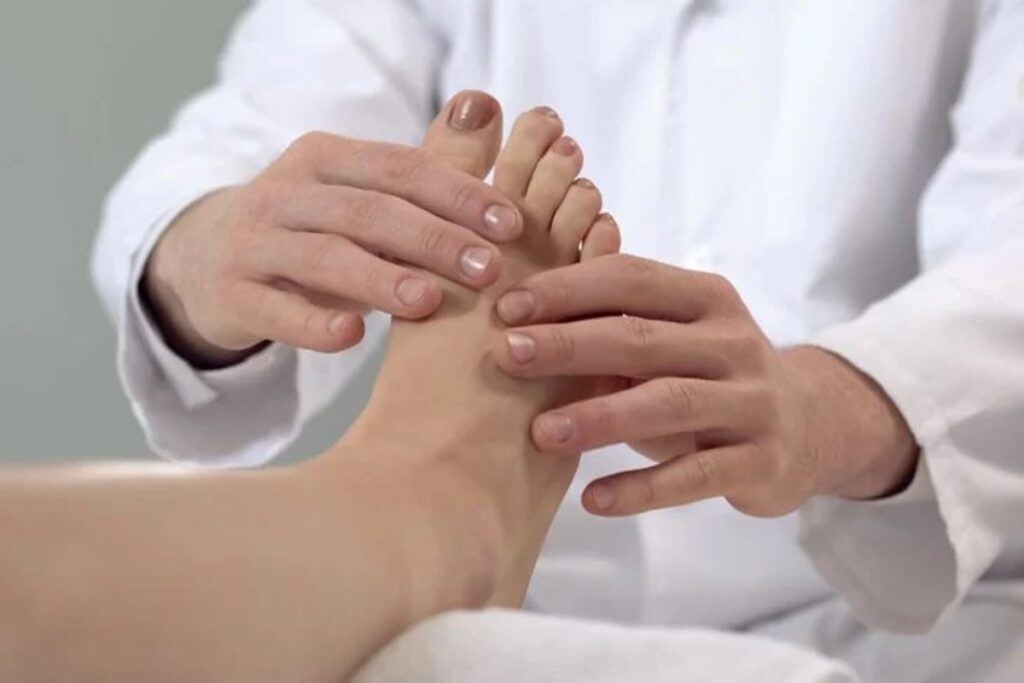Ingrown toenails may seem like a minor issue, but they can quickly become a painful and recurring condition without proper care. Whether caused by tight shoes, improper trimming, or trauma, ingrown toenails can lead to serious discomfort, inflammation, and even infection. At Wisconsin Foot & Ankle Clinic, we specialize in effective ingrown toenail removal, fast recovery, …
Ingrown toenails may seem like a minor issue, but they can quickly become a painful and recurring condition without proper care. Whether caused by tight shoes, improper trimming, or trauma, ingrown toenails can lead to serious discomfort, inflammation, and even infection. At Wisconsin Foot & Ankle Clinic, we specialize in effective ingrown toenail removal, fast recovery, and long-term prevention plans tailored to each patient’s needs.
What Is an Ingrown Toenail and Why It Happens
Ingrown toenails occur when the nail curls downward and the nail edge pierces the surrounding skin, causing redness, swelling, and pain. The condition can affect any toe, but it most commonly develops in the big toe. Without early treatment, symptoms may worsen, resulting in drainage, pus, and the need for surgical removal.
An ingrown toenail, medically referred to as onychocryptosis, happens when the edge of the nail grows into the skin beside it. This condition typically affects the big toe and is especially common among teenagers and young adults. Without proper treatment, an ingrown toenail can lead to persistent pain, ongoing discomfort, and limited mobility due to swelling or infection.
Understanding the Anatomy of a Toenail
Each toenail sits in a narrow groove and grows from the cells underneath the nail. When the nail edge deviates from the groove and grows into the skin, it creates pressure and irritation. If left unchecked, this can damage the nail bed, trigger inflammation, and eventually cause infection—especially if you wear poorly fitting shoes that squeeze the toes.
Common Causes of Ingrown Toenails
A number of common habits and health issues contribute to this condition:
- Improperly trimmed nails: Don’t trim your nails too short, and don’t round the corners. Always cut straight across to avoid encouraging the nail to grow inward.
- Tight or poorly fitting shoes: These apply pressure to the nail groove, increasing the risk of the nail curling downward.
- Toe injuries or trauma: A torn nail or stubbed toe can change the way your nail grows.
- Sweaty feet and poor hygiene: Moisture softens the nail, making it easier for it to break the skin.
- Genetic predisposition: Some people naturally have curved nails or narrow nail grooves.
In Brookfield’s winter months, enclosed footwear can make matters worse. Pairing this with improper trimming of the nails creates the perfect storm for recurring ingrown toenail removal needs.
When to Seek Professional Help
You should see a podiatrist or primary health care provider if you notice:
- Persistent pain or pressure in the toe
- Visible redness or swelling
- Drainage, pus, or signs of infection
- Difficulty walking or wearing shoes
Ingrown toenails are one of the most frequent foot concerns seen in primary care. In fact, roughly 1 in 5 people who visit their doctor for foot issues are dealing with an ingrown toenail. This statistic highlights the importance of timely care and underscores how common—but manageable—this condition really is.
Ignoring these symptoms can allow bacteria to spread, especially in diabetic patients. Prompt evaluation through physical examination at a podiatric clinical care in Brookfield, Wisconsin, ensures that treatment is fast, safe, and effective.

Ingrown Toenail Removal Options Explained
There are many ways to address an ingrown toenail, depending on the severity and how often the problem comes back. Mild cases may improve with home care, while chronic or painful issues usually require nail surgery. Our team offers the right solution based on your specific needs and health history.
Non-Surgical Treatments for Mild Cases
For minor nail groove irritation, non-invasive approaches might help:
- Warm water soaking several times daily to reduce swelling
- Using cotton or waxed dental floss to gently lift the nail edge
- Wearing loose-fitting shoes or open-toed shoes to prevent added pressure
- Applying antibiotic ointment to fight bacteria
- Taking oral antibiotics if the area shows signs of infection
These options may provide relief, but they won’t stop the nail from growing improperly again. Without professional ingrown toenail removal, the pain often returns.
Partial Nail Avulsion (Toenail Surgery)
In many moderate cases, we recommend a partial nail avulsion. This involves trimming or removing the ingrown portion of the nail using sterile instruments. A chemical such as phenol may be applied to the nail bed to stop that part of the nail from growing back, resulting in a permanently thinner nail that no longer digs into the skin.
This type of nail surgery is safe, quick, and effective at preventing recurrence when done by a skilled podiatrist.
Full Nail Removal (Total Avulsion)
In severe or repeated cases, the full nail may need to be removed. This is typically reserved for cases with:
- Ongoing infection
- Repeated inflammation
- Severe trauma or torn nail
- Structural problems in the nail bed
After surgical removal, the nail regrowth process takes time, and follow-up care is key. Our clinic ensures that recovery is monitored every step of the way.
Why Choose In-Office Podiatric Surgery
At the Wisconsin Foot & Ankle Clinic, we perform ingrown toenail removal right in our Brookfield office. Local numbing medicine is used so you feel no pain during the procedure. Our treatments avoid the need for hospital visits, and we provide everything from dressing removal to bandaging and aftercare instructions during your visit.
What to Expect During the Procedure
The thought of toenail surgery can be intimidating, but knowing what to expect helps reduce anxiety. Our approach focuses on patient comfort, safety, and same-day relief. Everything is explained in advance, and we offer follow-up support to ensure a smooth recovery.
Step-by-Step Overview of Ingrown Toenail Surgery
- Your toe is cleaned and numbed using a local numbing medicine.
- The podiatrist removes the portion of the nail causing the problem.
- A chemical may be applied to the nail bed to stop the nail from regrowing in that area.
- A sterile dressing is placed over the toe, and you’ll receive instructions for bandaging and home care.
Most procedures do not require stitches. Some cases may use a slit tube, splint, or tape to help the nail grow out properly afterward.
How Long Does Ingrown Toenail Removal Take?
The entire procedure takes about 20–30 minutes and is performed as an outpatient service. Most patients are able to drive themselves home and resume light activity the next day. Our Brookfield clinic’s team ensures your experience is smooth from start to finish, just reach out via our Contact Us page.
Ingrown Toenail Removal Recovery Timeline
Healing after ingrown toenail removal is usually fast, especially with proper care and rest. The recovery time depends on how much of the nail was removed and how well the toe is protected afterward. Wearing the right shoes and avoiding trauma is crucial for proper healing.
Recovery Time for Partial vs Full Removal
- Partial nail removal: You may return to normal shoes within 1–2 days and feel almost no pain after the first night.
- Full nail removal: Healing can take 1–2 weeks, and nail regrowth may be slower. We advise limiting physical activity during this time.
The goal of ingrown toenail removal recovery is to reduce inflammation, avoid infection, and ensure the nail bed heals cleanly.
Activity Restrictions and Work Return
Patients should:
- Avoid bumping your toe during the first few days
- Wear loose-fitting shoes or open-toed shoes
- Use a pain reliever as needed
- Elevate the foot to reduce swelling
For work or school, most people return quickly, especially if the job does not require standing or running.

Ingrown Toenail Removal Aftercare Instructions
Following the procedure, the way you care for your toe will impact how quickly and cleanly it heals. Our clinic provides step-by-step aftercare plans tailored to each patient. You’ll receive supplies and guidance during your visit.
Cleaning and Bandage Changes
- Soak the toe daily in warm water with Epsom salt.
- Gently dry the area before applying antibiotic ointment.
- Cover with fresh cotton and replace the bandage as needed.
- Avoid tight socks and wear breathable footwear or wear socks to bed if your home is cold.
These ingrown toenail removal aftercare steps are key to preventing complications.
Managing Pain and Preventing Infection
- Use over-the-counter pain reliever like acetaminophen or ibuprofen
- Elevate the foot at night
- Watch for signs of infection: increased redness, drainage, foul odor, or spreading warmth
We are here to guide your recovery—just visit our Contact Us page with questions.
How Our Clinic Supports Post-Procedure Healing
We schedule follow-up appointments to monitor healing and ensure the nail bed is recovering properly. If additional treatments like laser or taping the nail are needed, our team is prepared. For anyone searching for a podiatrist pedicure near you, our approach blends comfort with clinical precision.
Preventing Future Ingrown Toenails
The best way to avoid future problems is through simple, consistent foot care. Many cases can be avoided with smart habits and regular visits to a podiatrist. We educate each patient on best practices to reduce recurrence.
Nail Cutting Tips
- Always trim the nails straight across the top
- Don’t round the corners
- Don’t trim your nails too short
- Use clean tools and trim after a shower when nails are soft
These small steps go a long way in preventing pressure along the nail edge.
Footwear and Hygiene Recommendations
- Wear loose-fitting shoes with a wide toe box
- Avoid poorly fitting shoes that squeeze the toes
- Keep feet clean and dry daily to prevent bacterial buildup
If your lifestyle includes frequent exercise, proper footwear is especially important to prevent nail trauma.
Custom Preventive Care for High-Risk Patients
People with diabetes, neuropathy, or a history of nail problems benefit from routine podiatric checkups. At our Podiatric Clinical Care in Brookfield, Wisconsin, we offer preventative strategies tailored to each individual. If you’re looking for a podiatrist pedicure near you, our team provides safe, medical-grade foot care designed to protect and support diabetic feet.
Why Choose Wisconsin Foot & Ankle Clinic for Ingrown Toenail Care
Finding the right provider for ingrown toenail removal is essential for safe, lasting relief. Our clinic in Brookfield offers the experience, tools, and follow-up needed for every stage of care. From diagnosis to nail surgery to aftercare, we’re with you the whole way.

Expert Podiatric Surgical Care in Brookfield
Dr. Donald T. McDonald has over 25 years of experience in podiatric medicine and surgical treatments. He leads the team at Wisconsin Foot & Ankle Clinic and provides care backed by years of clinical success and patient trust.
In-Office Procedures With Minimal Downtime
There’s no need for hospital visits or lengthy recovery times. Our in-office procedures are quick, effective, and completed in a single visit.
Personalized Aftercare and Prevention Plans
Every patient receives tailored care, from bandaging tips to shoe recommendations. We don’t just fix the problem — we help you prevent it.
Conclusion
If you’re dealing with the pain of an ingrown toenail, don’t wait. Our Brookfield clinic provides fast, effective ingrown toenail removal with expert care and supportive recovery. Let us help you walk pain-free again — schedule your visit through our Contact Us page today.
FAQs
What does a stage 2 ingrown toenail look like?
A stage 2 ingrown toenail shows visible swelling, redness, and drainage. The skin around the nail groove may be tender and show early signs of infection.
Is getting an ingrown toenail removed painful?
Thanks to local numbing medicine, the procedure is nearly painless. Mild soreness may follow, but most patients feel better almost immediately.
Is it worth removing an ingrown toenail?
Yes. Ingrown toenail removal brings relief and helps prevent future pain or infection. Long-term recovery is much easier with professional care.







